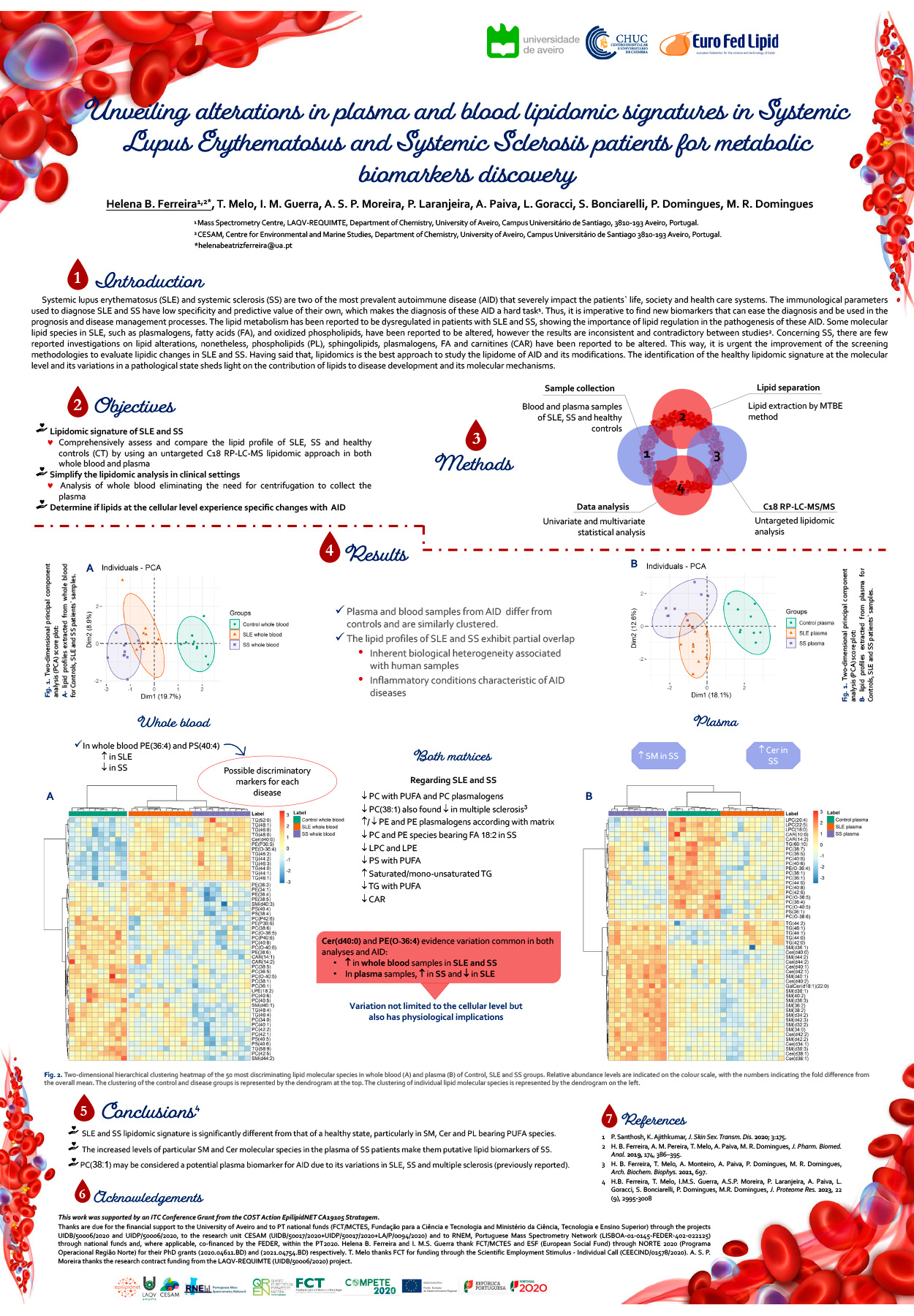Systemic lupus erythematosus (SLE) and systemic sclerosis (SS) are systemic autoimmune diseases among the most common ones and are very debilitating for the patient. For both SLE and SS the diagnosis is difficult and complex. To face this challenge, we sought to comprehensively assess the variation of the lipid profile from both whole blood and plasma of patients with SLE and SS, by using untargeted C18 RP-LC-MS lipidomic analysis. Our results show variations, specific of each type of sample, of the lipid profile of SLE and SS. We determined variation of sphingomyelins (SM) and ceramides (Cer) species in plasma and phosphatidylserines (PS) species in the blood, while phospholipid species bearing polyunsaturated fatty acids (PUFA), namely phosphatidylcholines and phosphatidylethanolamines, showed variation in both blood and plasma. SM and Cer molecular species are significantly increased in plasma samples of SS, which is highly suggestive of an atherosclerotic profile and may be considered future lipid biomarkers. In blood, PS species in SLE patients were increased, reflecting the already reported dysregulated cell death processes and defective clearance of dying cells. Phospholipid species with PUFA were found decreased, which could be due to degradation of these species by lipid peroxidation processes, once SLE and SS have an increased oxidative stress environment influenced by a persistent inflammatory state. These results highlight specific variations from each autoimmune disease and the importance of lipids for potential biomarkers of SLE and SS.
